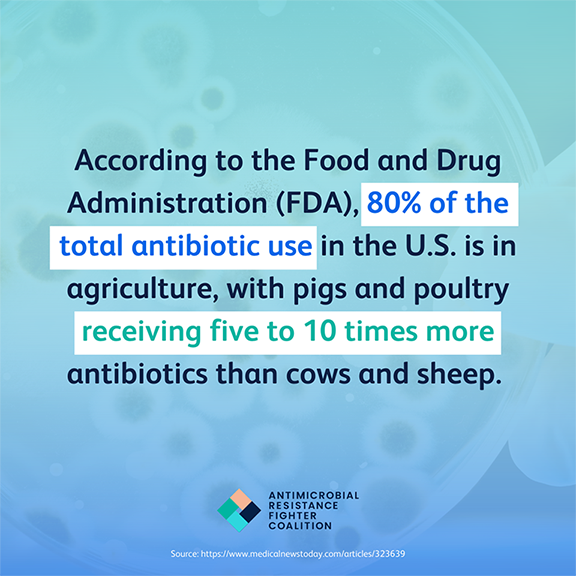The overuse and misuse of antibiotics in animals is another major contributor to AMR because it raises the risk of transmitting drug-resistant bacteria to humans.
A recent analysis by NRDC, conducted with the Center for Disease Dynamics, Economics & Policy, estimated that 65% of medically important antibiotics sold in the United States are being used in food-producing species, compared with 35% in humans.
There are several reasons for this, including the fact that antibiotics are used to treat, prevent, and control animal diseases and increase the productivity of animals and operations. However, there is concern that routine antibiotic use in livestock will contribute to antimicrobial-resistant pathogens, with repercussions for human and animal health.
One of the most obvious ways that AMR and One Health are interconnected is through the spread of zoonotic diseases — that is, illnesses that originate in animals and can be transmitted to humans; examples that you may be familiar with include the West Nile virus and Bird Flu.
Scientists estimate that more than 6 out of every 10 known infectious diseases in people can be spread from animals, and 3 out of every 4 new or emerging infectious diseases in people come from animals.
This underscores the importance of using One Health strategies to address AMR in animals. For instance, we could improve monitoring and surveillance efforts for antibiotic use and resistance, better regulate the antibiotics used in food animals, or promote more sustainable farming practices that reduce reliance on antibiotics. A 3rd Global High-Level Ministerial Conference on Antimicrobial Resistance was held in November. The conference agreed the Muscat Ministerial Manifesto, which sets out the three global targets. Two of the targets focus on the use of antimicrobials in animals:
Reduce the total amount of antimicrobials used in agrifood systems by at least 30 – 50% by 2030, galvanizing national and global efforts;
Preserve critically important antimicrobials for human medicine, ending the use of medically important antimicrobials for growth promotion in animals.


